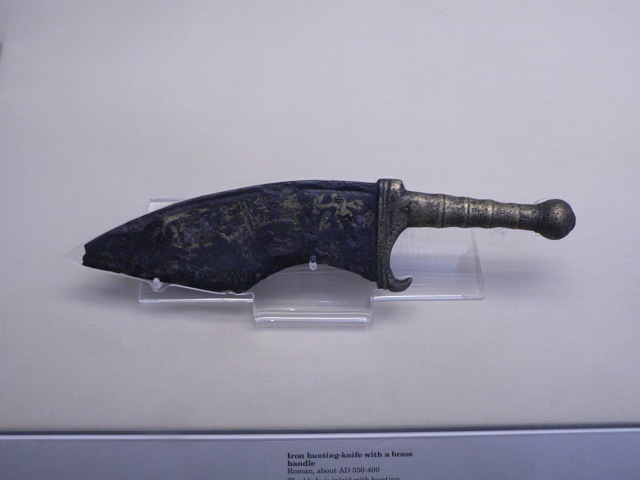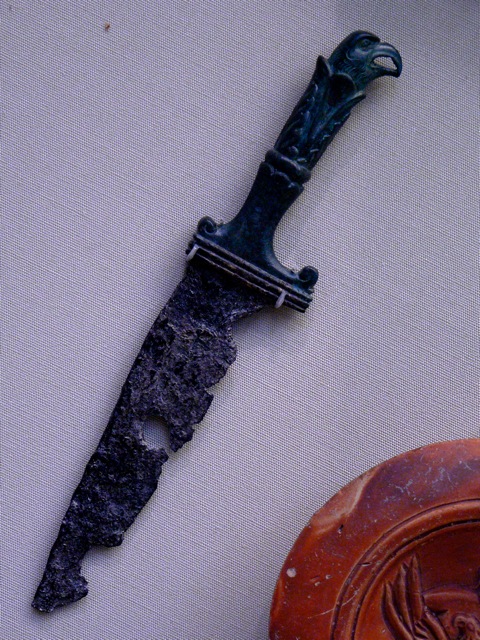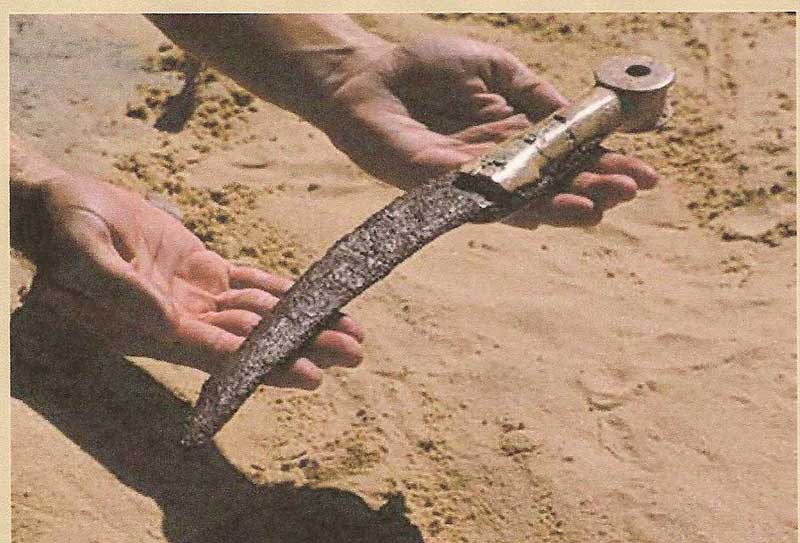
This picture make it look as if Paul is wielding a modern day kitchen knife. How trustable are images of history when it comes to weapons?

| Johnathyn N. Spencer wrote: |
| I was wanting to make a model of Apostle Pauls' sword but, didn't know where to start. I got some advice from Kirk Spencer who, if I can remember right said, "it wasn't custom for Jewish Disciples to carry swords. So when Paul cut off the ear of the servant, the blade was likely concealed." The blade type recommended was a Sica, which can be small enough to hide in clothing but, but long enough to use in combat. often in stain glass and painted pictures of Paul he has some kind of longsword, or sometimes a wide-tipped, sword similar in shape to a Dussack. The Archdiocesan Museum claims to have an exact copy of the sword Apostle Peter used to cut off the right ear of the high priest's servant at the time of Jesus' arrest in Gethsemane.. Does anyone have advice on the history or shape of Paul's sword? |
| Philip Renne wrote: |
| On the same topic, the Germans I believe called a certain knife/falchion thingy "Malchus" after the de-earred (is that a word?) servant in the Bible
John 18:10 Then Simon Peter, having a sword, drew it and smote the high priest’s servant and cut off his right ear. The servant’s name was Malchus. |
| Fisher Lobdell wrote: |
| The real question is did peter have a sword beforehand, or did he have to sell his cloak and buy one, and if so, what kind of sword could he have bought with the money? Luke 22:36
having one before would change the context, and reasons of obtaining it. |
| Marcoantonio Gonzalez wrote: |
| I remember my pastor had told me that Peter in his malicious intent accidentally cut his own ear and that is why Jesus said unto him, Put up again thy sword into his place: for all they that take the sword shall perish with the sword.
I would say it was a double edged probably a gladius because he was a fisherman and probably didn't know anything about swords |
| Johnathyn N. Spencer wrote: |
| Thanks for all of your replies. Everyone has helped me tremendously with the history of this weapon. I have decided to go with a Falcata/Gladius mix. I'm not going to start working on the 3-Dimensional model of the handle until i have a better idea of what it looked like (Historically). I have decided on the blade being a Falcata but, if you would like to argue another type, please feel free to. I have had many ideas of how i would mix the two but the image i decided on (for the blade) is linked in the post. Again I can't thank the community enough for helping me with this project. |
| Matthew Amt wrote: | ||
Obviously you can make what you want, just be aware that such a weapon never existed. And the the falcata blade is really more Spanish or early Italian, long out of Roman use by this point in time. It's possible that later variants of the Greek kopis were still around, but they tended to have a blade with a straighter or slightly curved back, not as angular as the falcata. You still wouldn't find one with a gladius hilt. Asymmetrical blades always had asymmetrical hilts. Matthew |
| Johnathyn N. Spencer wrote: |
| I completely agree, I know something is off but, if I were trying to find an idea of what Paul had, the closest thing I would find could be closer to a Sica rather than a Falcata. I feel like something is off about the blade though, when I look at the swords suggested to me it seems as if the blade has a harsh curve on it. I would like to believe that the blade Paul pulled was larger than an average "Fisher Knife". If I wanted to make an interesting mix for a sword, I would combine the Sica blade with a Gladiator-Type handle but, historically it wouldn't make sense. Even if i am incapable to find an exact copy of what Paul's sword looked like, I can still try my best to be close as possible. I don't believe that it will be possible to find a accurate handle but, I do believe that an accurate blade is more than achievable. I just need the right resource. I would assume that the handle would be something very simple, likely made of a cheap material. |
| Matthew Amt wrote: | ||
Not to be sounding like I'm nitpicking, but just to clarify my point of view--to me, "as close as possible" pretty much precludes trying to put parts of different weapons together. We have a pretty good idea of what was available at the time, so why not just go with a known artifact? Also, "sica" was a known word back then, a very familiar object (though it obviously varied wildly in size and shape). It was a knife, possibly quite large, with a distinctly curved or angled blade. Yet the word used is "machaira", *generally* used more for an actual sword. And since the area had been under Roman domination for a number of generations at that point, the most likely candidate for a sword would be a Roman one, or at least something bearing a strong resemblence to a Roman sword. Jesus and his disciples had been talking about getting *weapons*, not just fisherman's knives. If you go with a sica, there is a thread about it, with some decent information: https://myArmoury.com/talk/viewtopic.php?p=139506 Nothing wrong with wood or bone for the grip, but even every-day tools back then were often decorated and nicely made. Some of the artifacts identified as sicas have iron guards or even pommels, which to me implies they were meant as weapons. I'd be a little leery of most modern reconstructions of *gladiator* sicas, since too many of them are just a bent gladius. Not right. Ah, this is the one I was thinking of, clearly a substantial weapon: [ Linked Image ] That'll take an ear off! Matthew PS: Peter, not Paul, eh? ;) |




